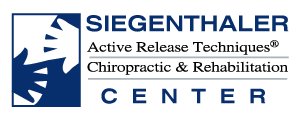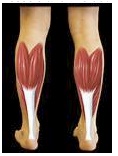Achilles Tendonitis – Leg Pain
The achilles tendon attaches the muscles of the posterior calf to the calcaneus. The Achilles tendon does not have good blood supply or cell activity, so this injury can be slow to heal. The tendon receives nutrients from the tendon sheath or paratendon.
When an injury occurs to the tendon, cells from surrounding structures migrate into the tendon to assist in repair. Some of these cells come from blood vessels that enter the tendon to provide direct blood flow to increase healing. With the blood vessels come nerve fibers. Researchers including Alfredson and his team in Sweden [1] believe these nerve fibers to be the cause of the pain – they injected local anaesthetic around the vessels and this decreased significantly the pain from the Achilles tendon.
Causes & Treatment
Achilles tendonosis is a classic overuse sydrome. Most lower extremity injuries are caused by overuse, and typically occur with a change in shoes, surface, or intensity. Examples would be increasing speed or mileage too quickly for a runner, changing types, styles, or shoe companies, and changing from a treadmill to outdoor surfaces. These variables can all alter biomechanics of the knee and ankle joints. Growth spurts while athletes are maturing, can also alter the mechanics enough to cause one of the above conditions. Athletes transitioning too quickly to barefoot or minimalist shoes, can also easily instigate an achilles tendonosis episode, due to the increase of flexibility required to run without a raised heel running shoe.
In our office, we treat achilles tendonosis with a combination of Active Release Techniques and Graston Technique, along with eccentric stretching and ultimately a strength and stabilization program for surrounding anatomy.
Related Articles:

